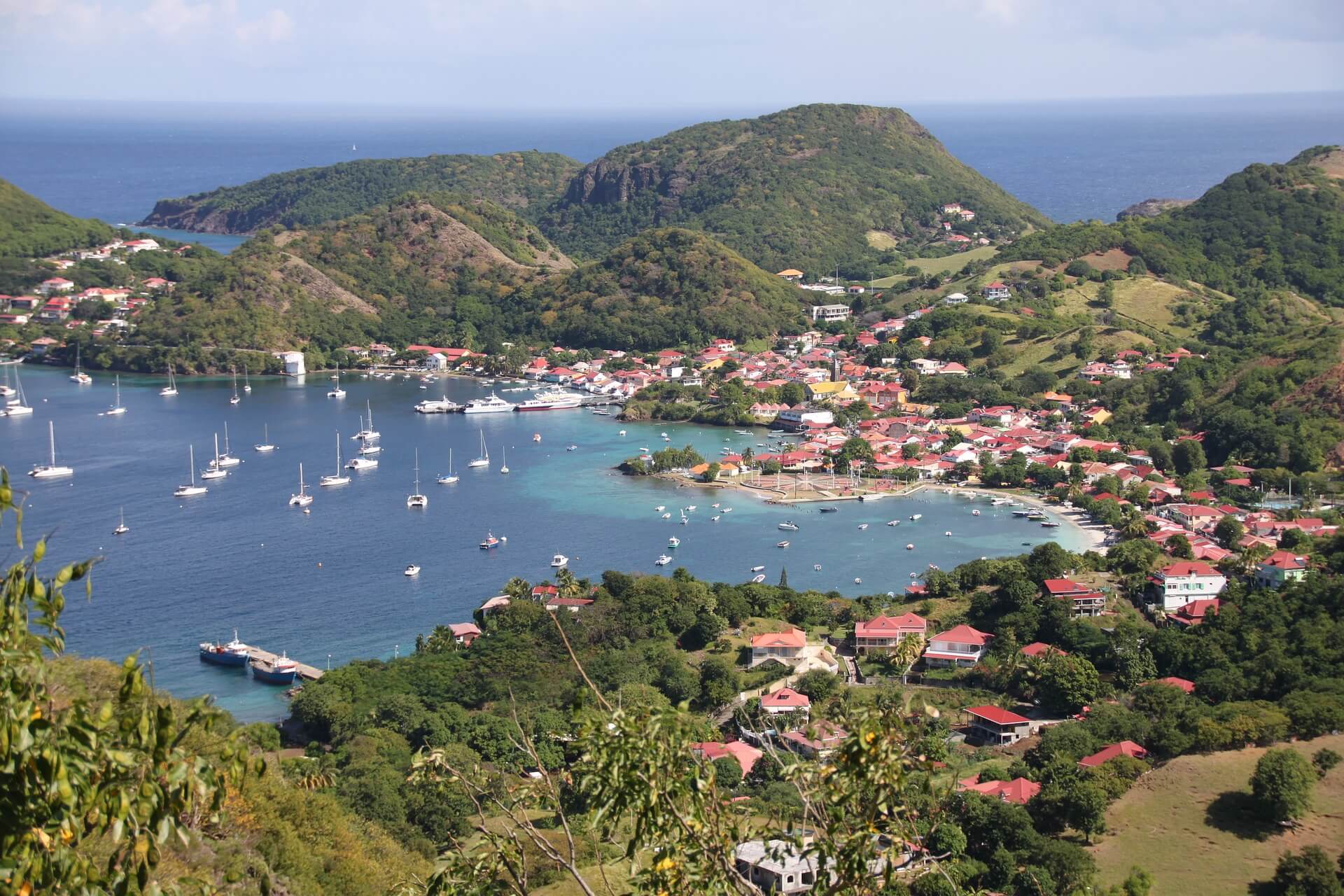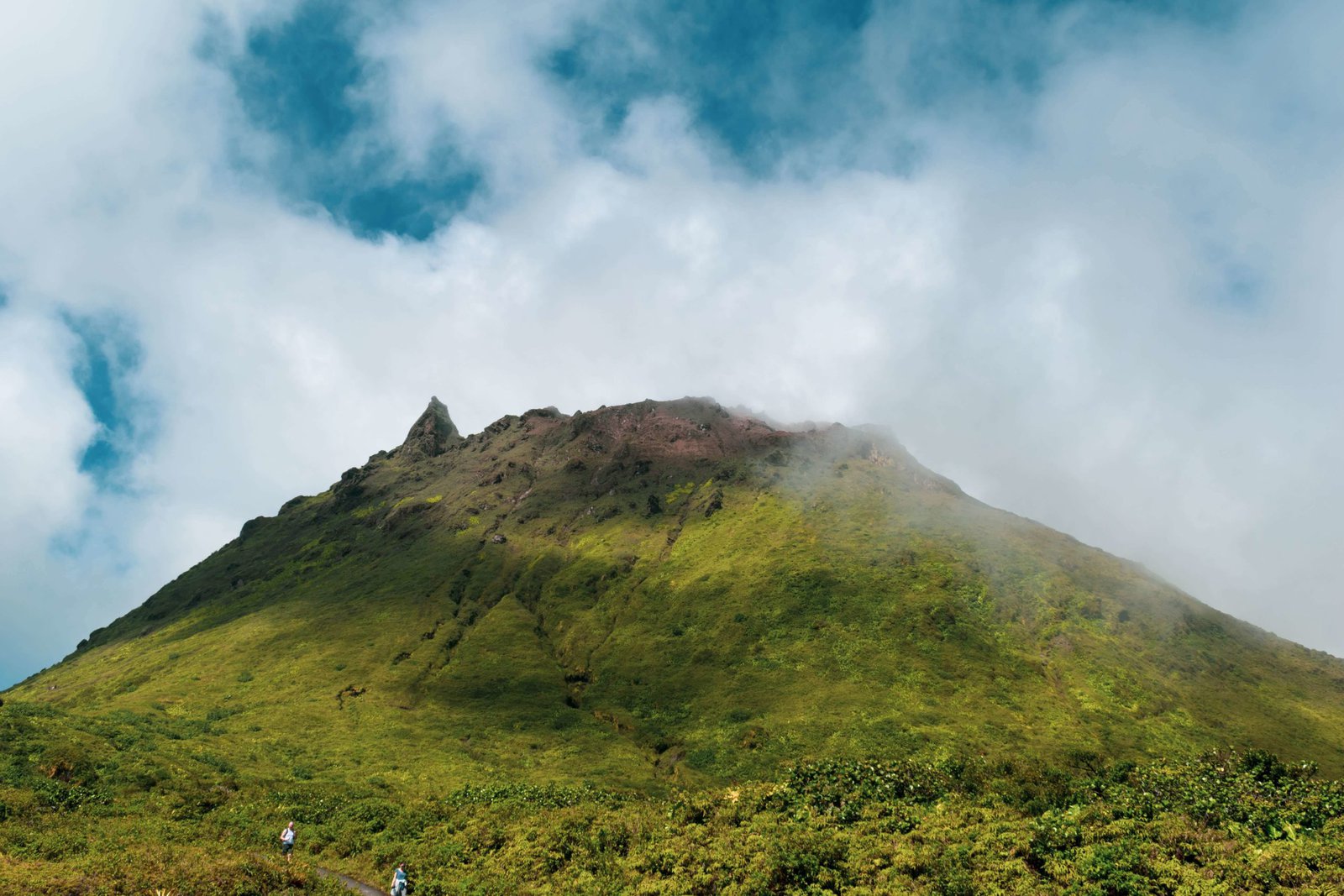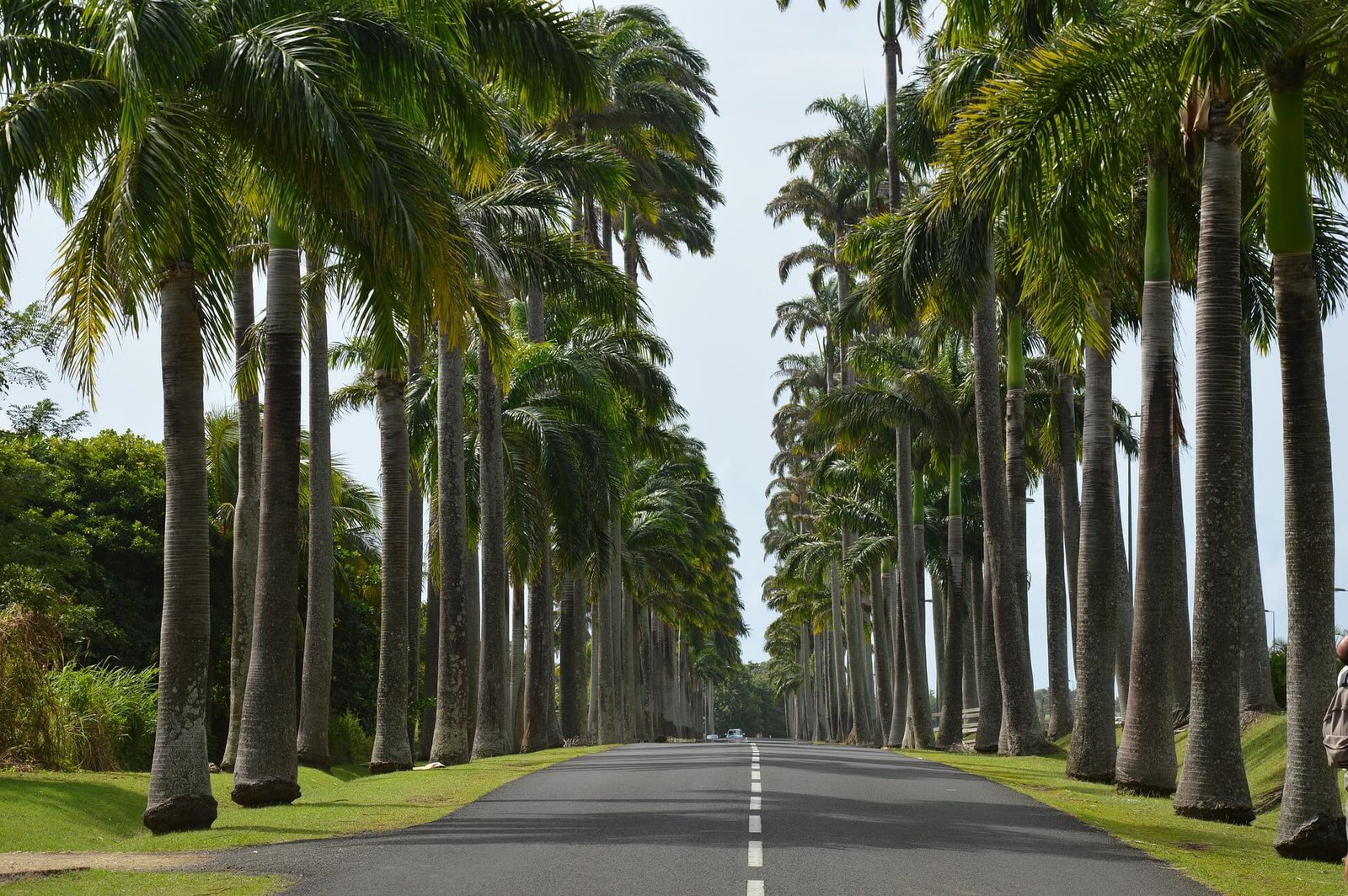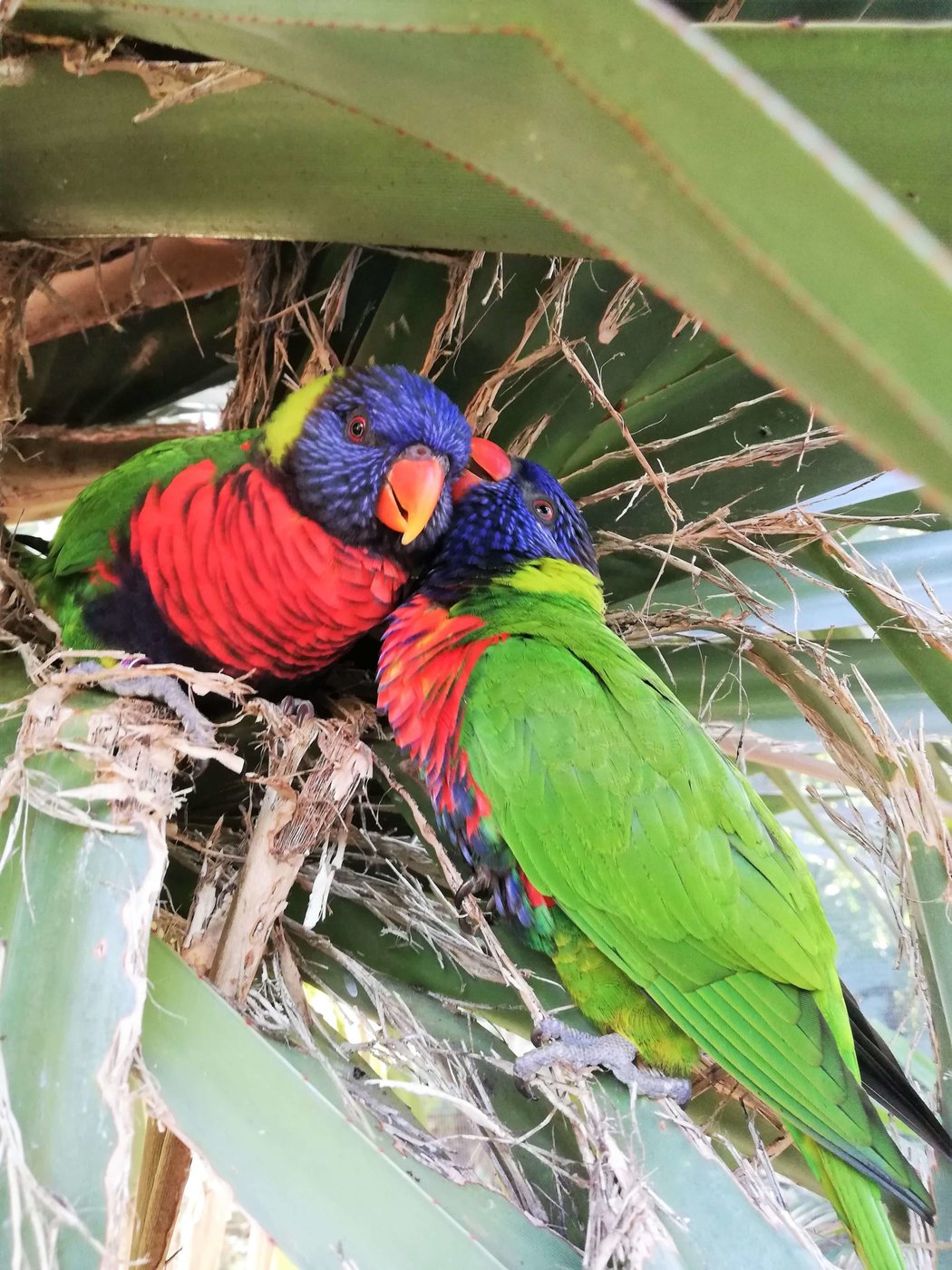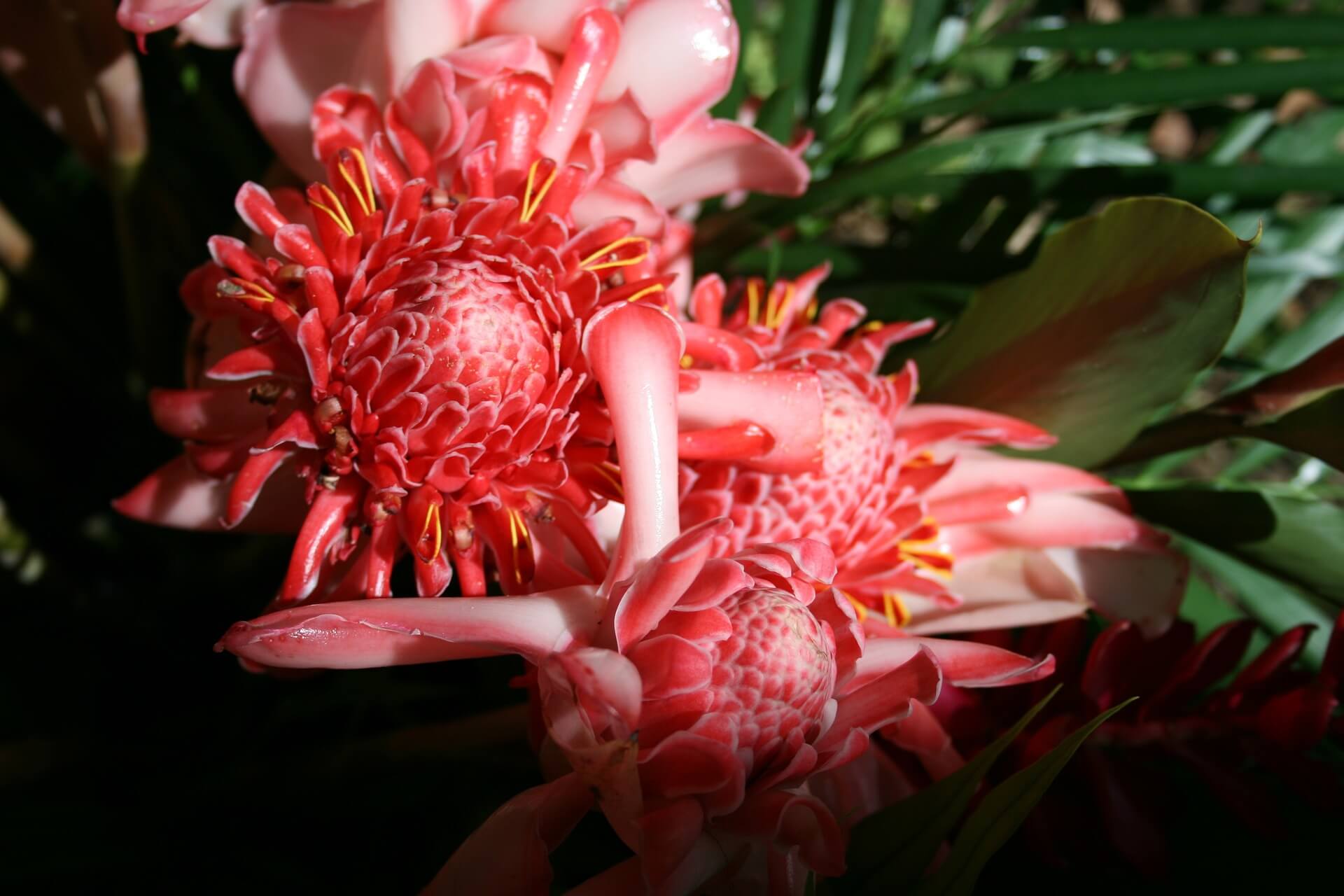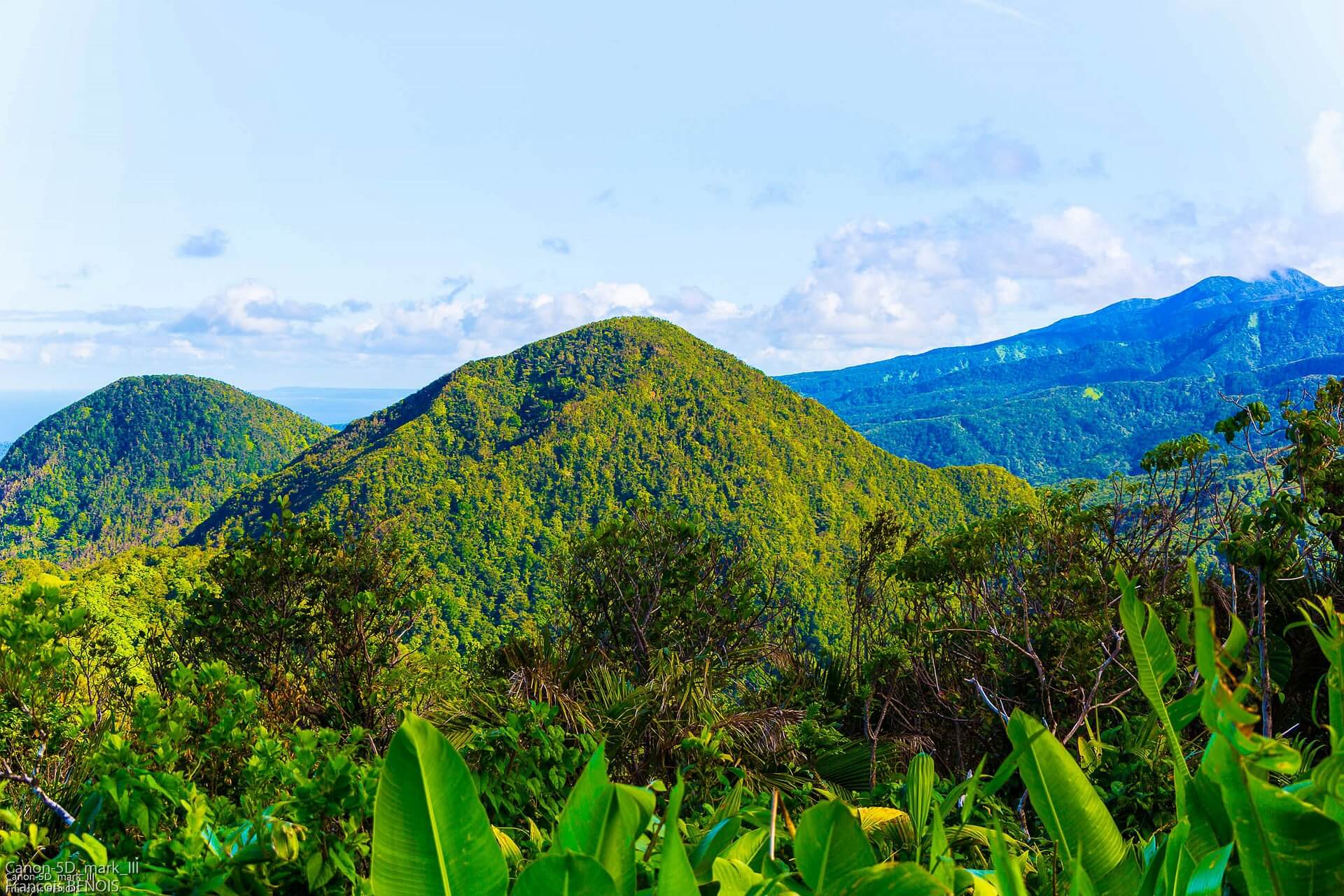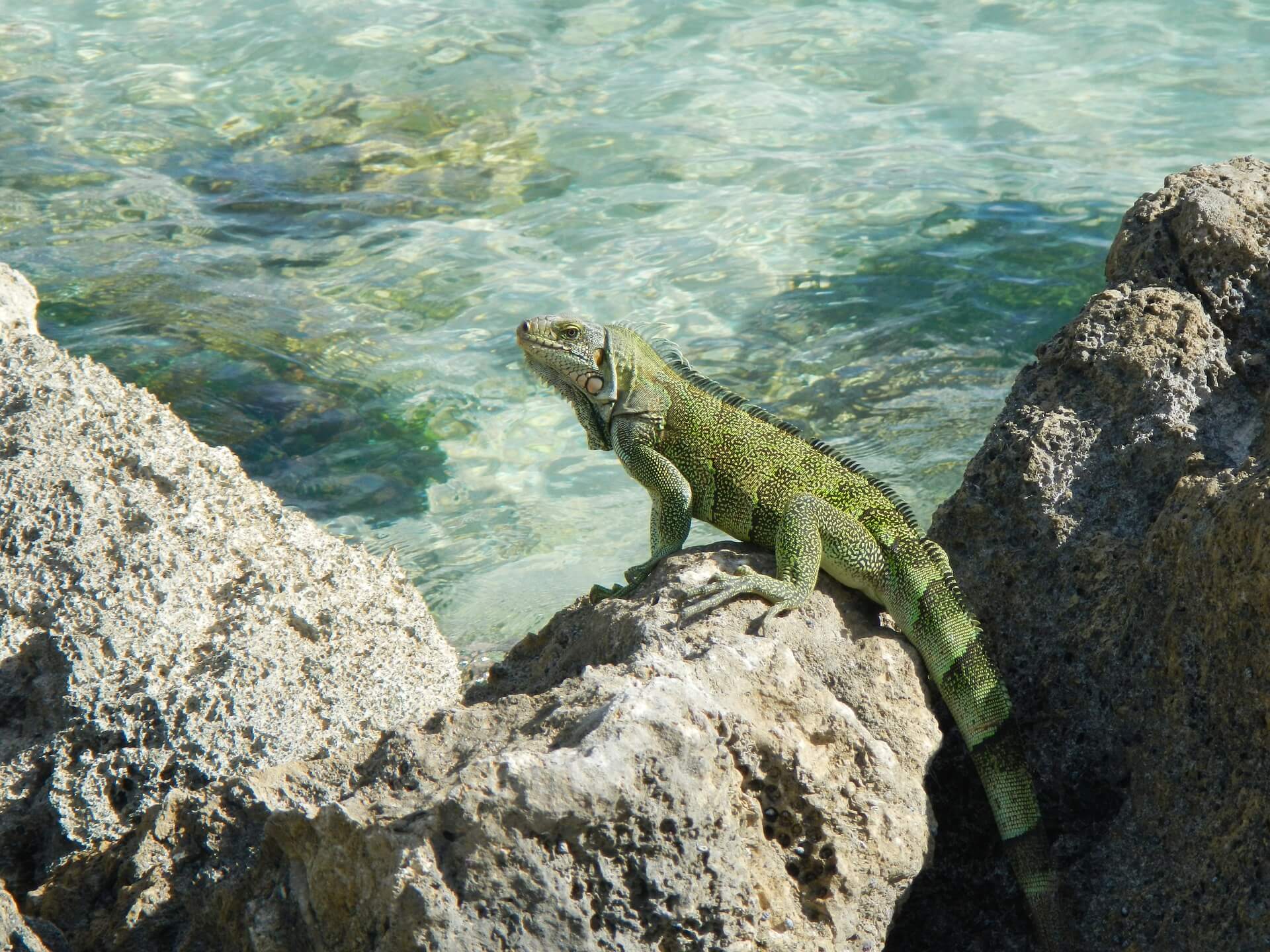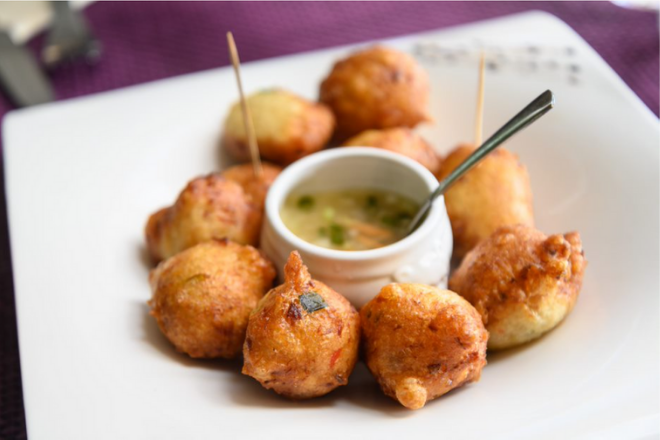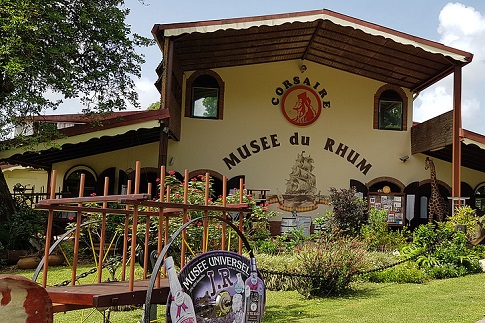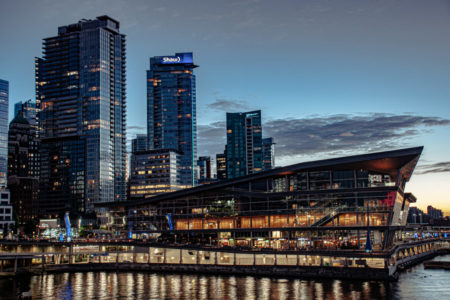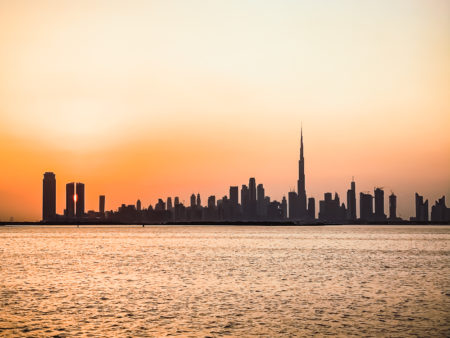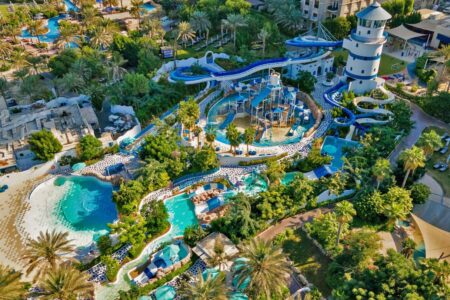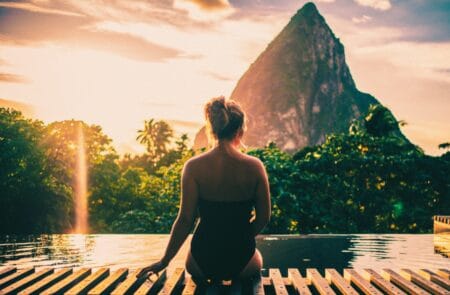Located in the heart of the Caribbean, the islands of Guadeloupe stand out for their diversity. The archipelago comprises five main islands:
- Basse-Terre ;
- Grande-Terre ;
- Marie-Galante ;
- Les Saintes ;
- La Désirade.
Bordered by the Atlantic Ocean and the Caribbean Sea, these islands are rich in natural and cultural heritage. The destination has a lot to offer: 10 weeks of festivities, 90 historic monuments, seven nature reserve zones and 400 km of beaches.
The two largest islands, Grande-Terre and Basse-Terre, take the shape of a butterfly and are separated by the Salée River. One of the great stars of Guadeloupe is undoubtedly its famous active, but eruptive resting volcano, La Soufrière.
The destination is less than five hours’ flight from Montreal. Arrival is at Guadeloupe Pôle Caraïbes (PTP) international airport.
Flights to Guadeloupe
Air Transat, Air Canada and Air France offer direct flights from Montreal at certain times of the year.
Looking for a carnival experience? Here are some examples of flights with points and miles:
For Air France, a one-way ticket on January 17, 2024 starts at 38,500 miles + $60.91, via the Flying Blue frequent flyer program.
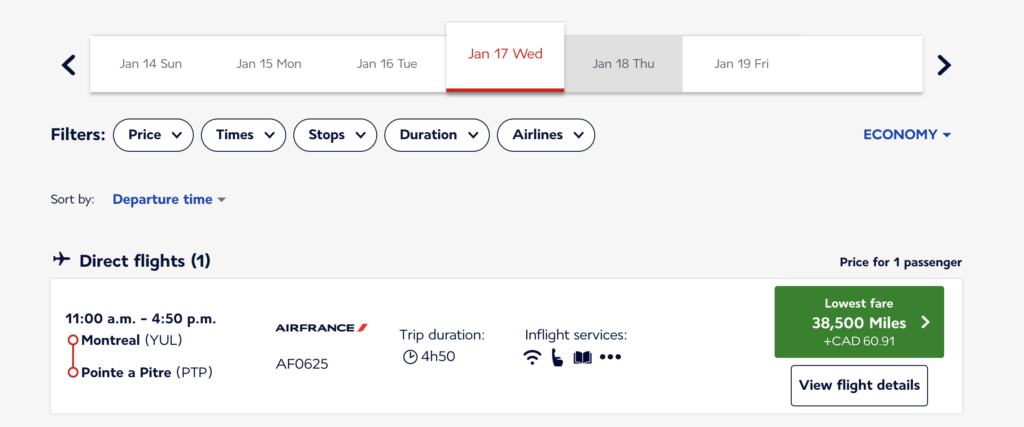
For a flight on Air Canada, a one-way ticket on January 15, 2024 starts at 24,100 points + $67 via the Aeroplan loyalty program.

Note that the TD Aeroplan Visa Infinite Card is one of the credit cards that offers free baggage on flights with Air Canada.
Five islands to discover
Basse-Terre
The largest island of Guadeloupe, the surface area of Basse-Terre is 848 km2 and its main cities are :
- Sainte-Rose ;
- Deshaies ;
- Trois-Rivières ;
- Basse-Terre ;
- Petit-Bourg.
To see/do in Basse-Terre :
An excursion to meet the Soufrière volcano, summit of the Lesser Antilles.
Sail through the islets and islets of the Grand Cul-de-Sac marin nature reserve.
Cool off in the crystal-clear waters of the Cascade aux Écrevisses on the Route de la Traversée.
A hike through the ferns and orchids that populate the 17,300 hectares of the Guadeloupe National Park.
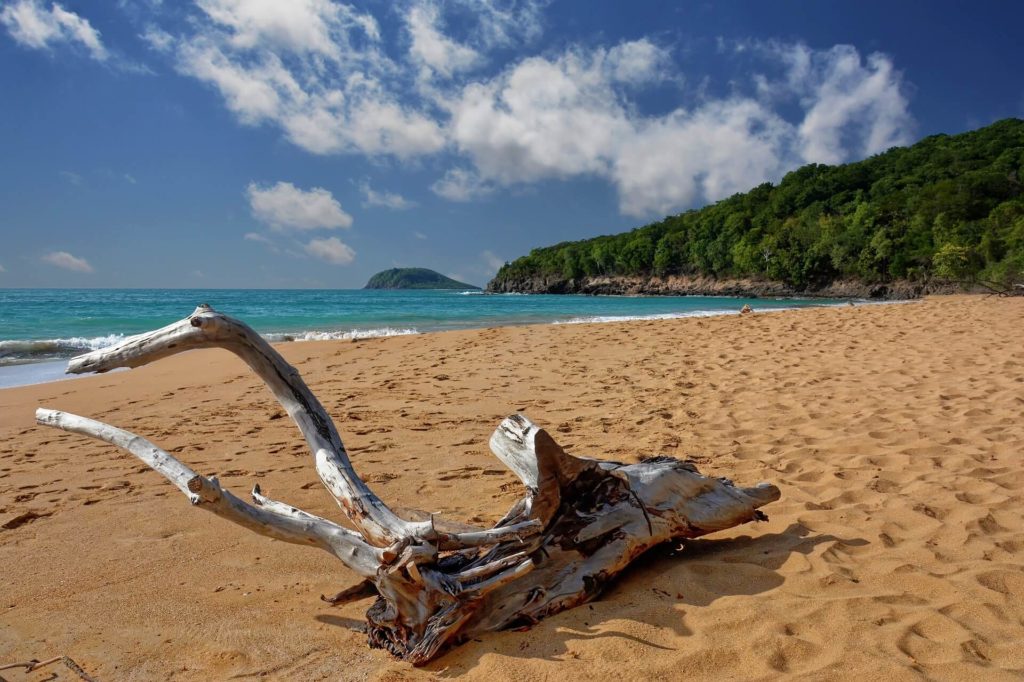
Grande-Terre
Grande-Terre has an area of 590 km2 and its economic capital is Pointe-à-Pitre.
To see/do in Grande-Terre :
Take in the view from Pointe de la Grande-Vigie or Porte d’Enfer, to the north, and you’ll be amazed!
Stroll through the colorful markets, filled with fruits, vegetables, spices, madras fabrics, flowers and fish, day and night.
Perfect your tan on the white sand beaches of the Rivière du Levant (from Gosier to Saint-François).
Parachute over the lagoon of Saint-François and admire the Pointe des Châteaux.
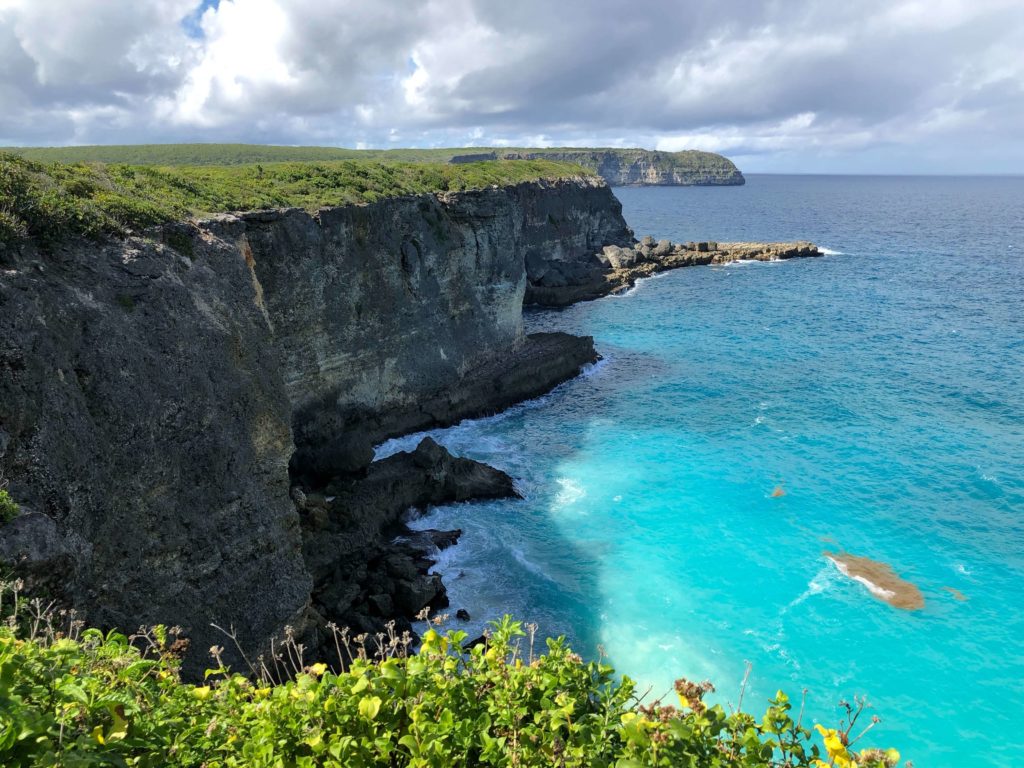
Marie-Galante
The surface of Marie-Galante is 158 km2.
To see/do in Marie-Galante:
Taste exceptional rums by visiting the Bellevue, Bielle and Poisson distilleries.
Travel back in time at theHabitation Murat, a former sugar house that has become an eco-museum.
Make a stop at the impressive cliff ” Gueule Grand Gouffre “.
Taste the culinary specialties: the Bébélé, the syrup of battery or the honey.
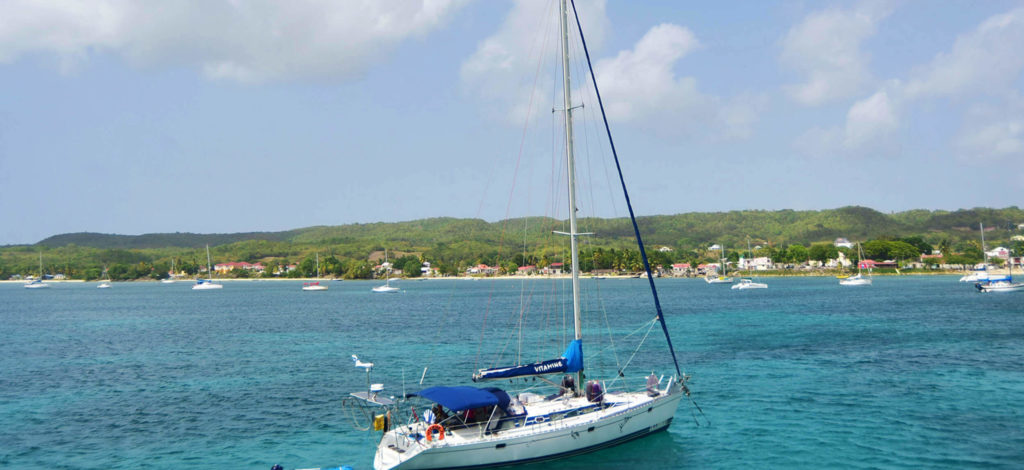
Les Saintes
The surface area of the islands of Les Saintes is just 14 km2, but they’re worth the detour because they take you on a whirlwind tour of colors!
To see/do in Les Saintes :
Discover Terre-de-Haut, the main island, famous for the coral-rich waters of the Sugar Loaf beach and its palm groves.
Admire the view of Marigot Bay, ranked among the most beautiful bays in the world, from Fort Napoleon.
Still in Terre-de-Haut, take advantage of the calm of Pompierre beach to savor a fish crepe or a tourment d’amour, a pastry made by the women for their husbands when they went fishing at sea.
Discover Terre-de-Bas. Hike using the path of the Dessus de l’Étang or the Cliffs, through the dry tropical vegetation.
Make a Salako, the traditional hat of the fishermen of Saint-Etienne.
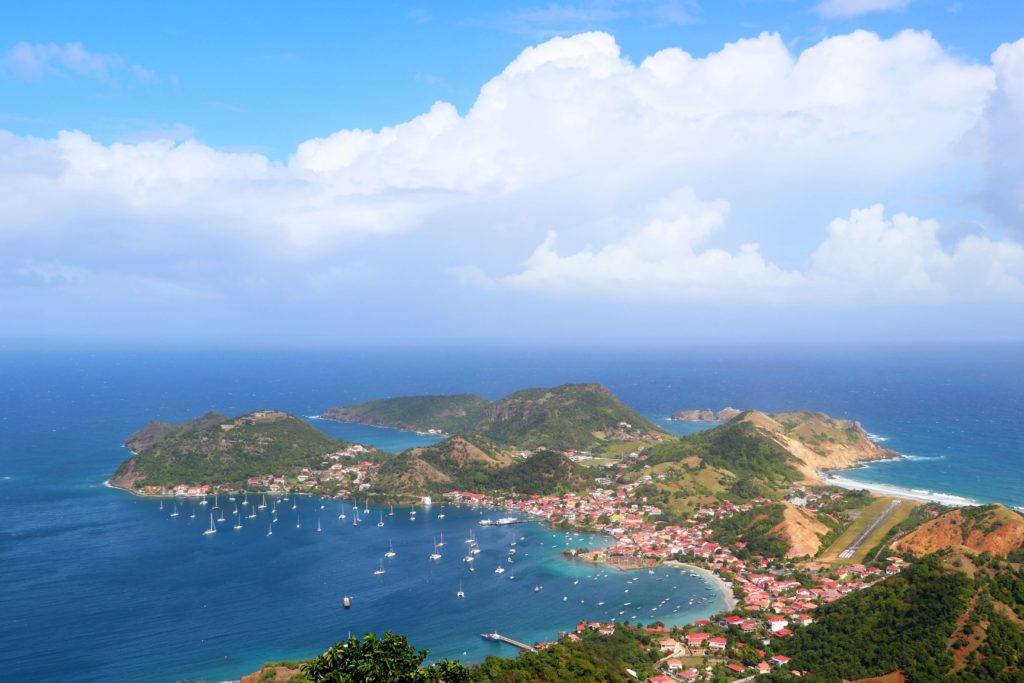
La Désirade
Located about ten kilometers east of Grande-Terre, the island of Désirade was the first land sighted by Christopher Columbus during his second voyage at sea. Its surface area is 22 km2.
To see/do in La Désirade :
A hike to the Désirade Nature Reserve.
Swim with mask and snorkel in the magnificent nature reserve of Petite-Terre, to approach the rays.
Taste the candied cashew with its manioc ice cream on the beach at Fifi.
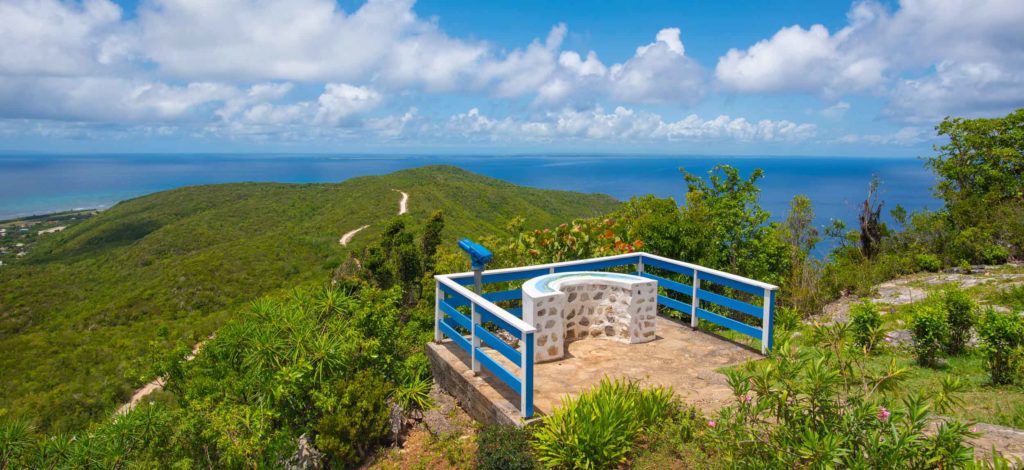
What to do in Guadeloupe
The main tourist attractions of the islands of Guadeloupe can be grouped into five categories: nature, boating, culture, gastronomy and well-being.
Reconnecting with nature
Guadeloupe has seven nature reserve zones, one national park and one biosphere reserve. Several parks and gardens are therefore interesting to visit.
The National Park of Guadeloupe has 1800 species of plants, with nearly 280 species of birds.
Among the activities that allow you to reconnect with nature: hiking or biking between wild landscapes and heavenly beaches, canyoning and tree climbing or horseback riding.
Nautical activities
The five islands of Guadeloupe all have beautiful beaches. The range of water sports on offer is generous: try your hand at surfing, kitesurfing, paddle boarding, jet skiing and more.
You can also dive in the natural marine environment of the Réserve Cousteau; observe the marine fauna by going out to meet whales and other cetaceans; and you could even swim with sea turtles at Malendure (Petite-Terre).
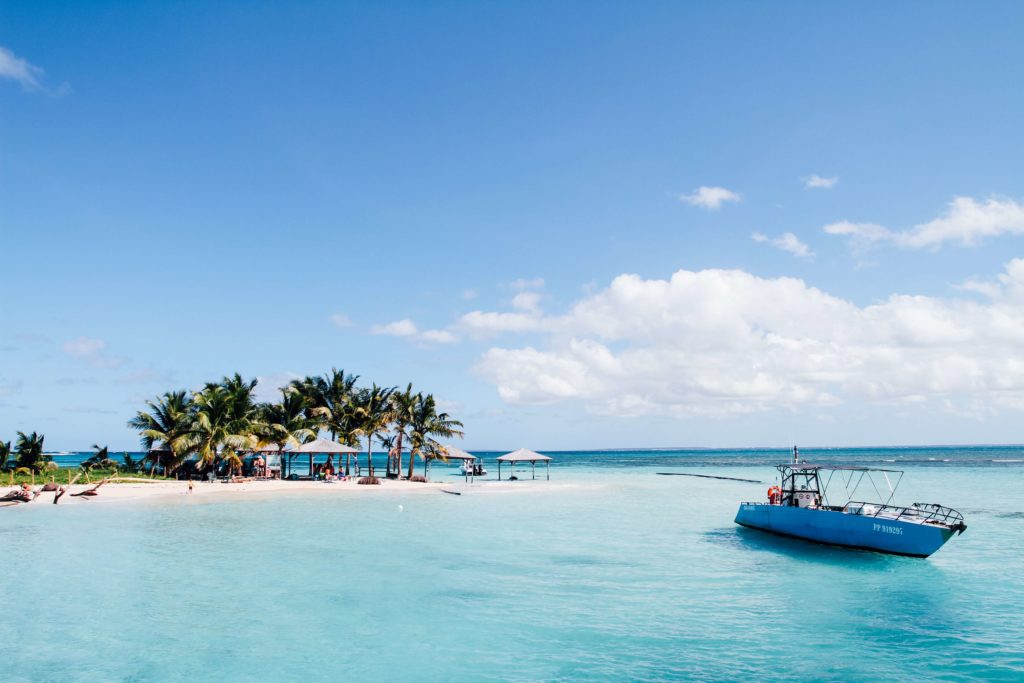
Culture
Guadeloupe is characterized by the different cultures that make it up (African, Indian, South American, Syrian-Lebanese…), all combined with the influence of European culture.
To discover the history of Guadeloupe, go for example on the tracks of the Indian community at the Changy Temple or at the Parc des Roches Gravées.
To learn more about the history of the Caribbean, visit the ACTe Memorial (Grande-Terre).
Carnival is the most anticipated event in the Caribbean. The Carnival starts in January and ends at the end of February. It is a colorful period in Guadeloupe, with dances and disguises.

Gastronomy
During your stay in the archipelago, you will certainly want to taste its unavoidable dishes. Among the best of Creole cuisine: accras, lambi, bébélé, dombrés, cashew and love torment.
To be tasted in a street truck: the Bokit, a fried bread filled with food. You will not miss the opportunity to taste agricultural rums and traditional punches.
Wellness
Guadeloupe is also an ideal destination for relaxation, whether in a spa in the middle of nature or in one of the natural springs of Dolé or Sofaïa.
For a massage and pampering, go to one of the many spas, either inside or outside the hotels.
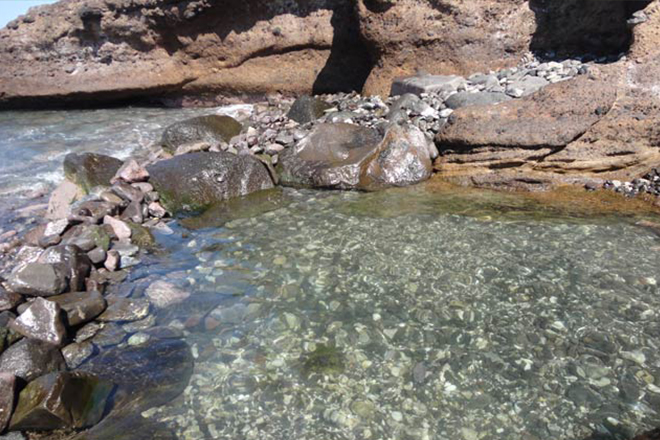
Key events & activities
Here are the main events taking place in Guadeloupe at different times of the year:
- January: Carnival;
- February: fat days ;
- April: Crab Festival, Kabrit Festival, Fish and Sea Festival;
- May: Terre de Blues festival, Saint-François International Open (golf);
- July: All Day Inn, Tour of Guadeloupe under traditional sail;
- August: Guadeloupe cycling tour, cooks’ festival;
- November: All Saints’ Day;
- December: nwèl kakadò and Chanté nwèl.
If you want to book activities in Guadeloupe, we recommend Viator:
Lodging: package, all-inclusive and more for your vacation
To find a place to stay in Guadeloupe, there are many alternatives. You’ll find hotels, villas, self-catering accommodation and gîtes.
Among the addresses to remember:
- La Toubana Hotel & Spa (5 stars) ;
- Konokara Ecolodge Village (3 stars) ;
- Pierre et Vacances (3 stars) ;
- Bois Joli Hotel (3 stars) ;
- Gîtes Amours d’Olivier (3 stars) ;
- Hôtel Soleil Levant (3 stars) ;
- Club Med.
Using Airbnb is a good idea, as well as with general booking sites like Booking.com.
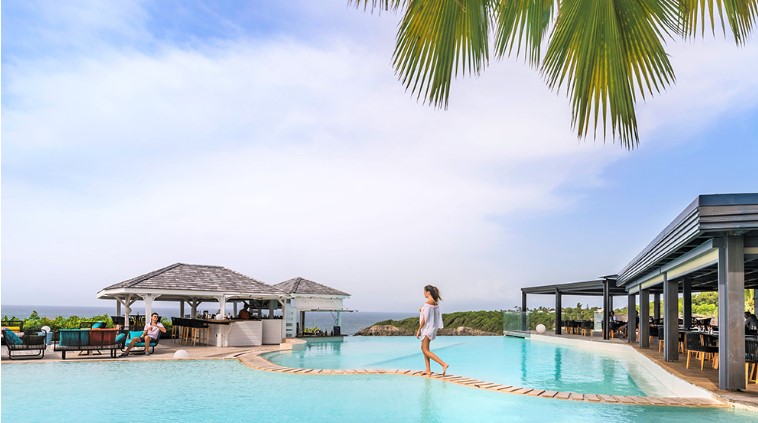
In Guadeloupe, there are unfortunately no big hotel chains where you can spend your reward points. Browse our guide to learn all about booking independent hotels and how to save with reward points :
Find your accommodation at the best price with Booking:
Getting around with family and friends
To visit Guadeloupe, the best is to rent a car (about 30 euros per day). This will allow you to stop wherever you want. All the beaches are free. Most parking lots are, too, as is the national park.
Otherwise, cabs and VTCs are widely available in the archipelago.
Inter-island connections by sea depart daily from Pointe-à-Pitre, Saint-François and Trois-Rivières. This will cost you between 20 and 30 euros for a round trip, lasting between 30 minutes and an hour, depending on which island you’re heading for.
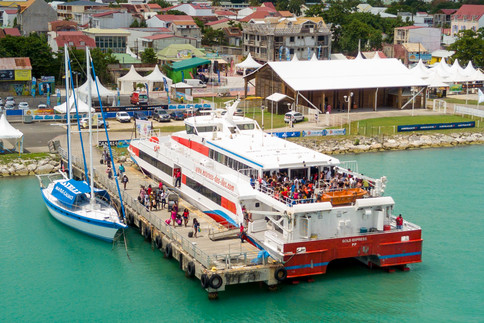
Useful destination information
Area: 1628 km2
Number of inhabitants: approximately 393,640
Time zone: one hour difference in winter
Currency: euros (€)
Health restrictions: for the moment, none
Languages: French and Creole
Climate: tropical, hot and humid. The wet season runs from July to November; the dry season from January to April. Temperatures are around 24°C and 30°C during the day. Water temperature averages 26°.
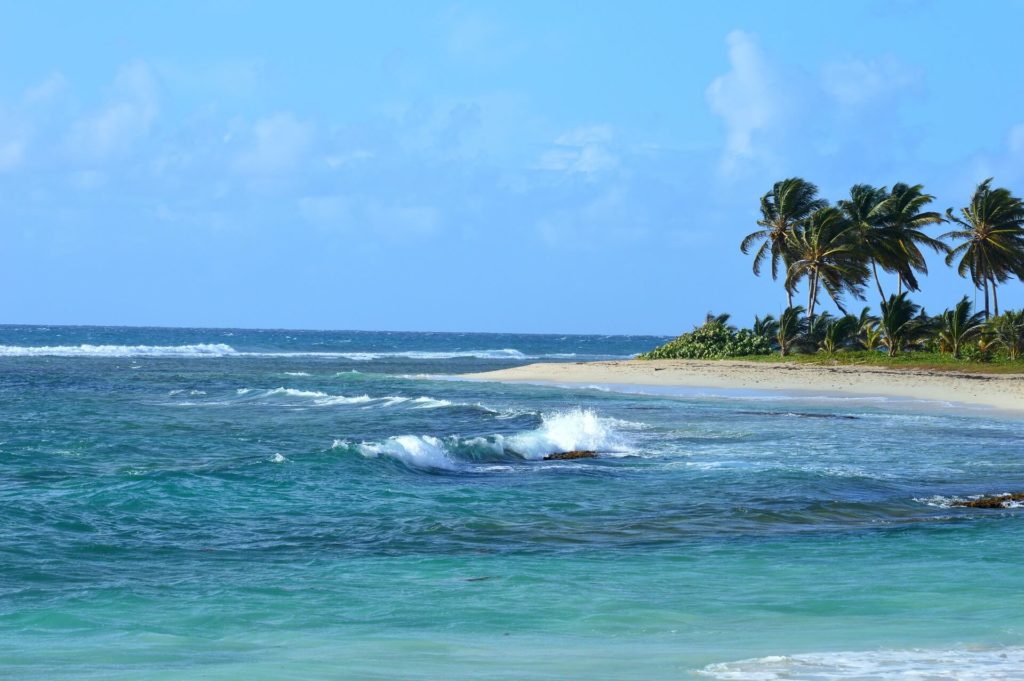
Is it safe to travel in Guadeloupe?
Petty crime is the biggest threat to tourists, according to the Government of Canada, although violent crime is rare.
When is the best time to visit Guadeloupe?
There are two seasons in Guadeloupe: the dry season (known as Lent) and the wet season (known as Winter). From January to July, rainy weather is rare.
How much should you budget for 15 days in Guadeloupe?
Your budget will depend on the period you choose: from January to July is the high tourist season. Accommodation and airfares could be higher.



